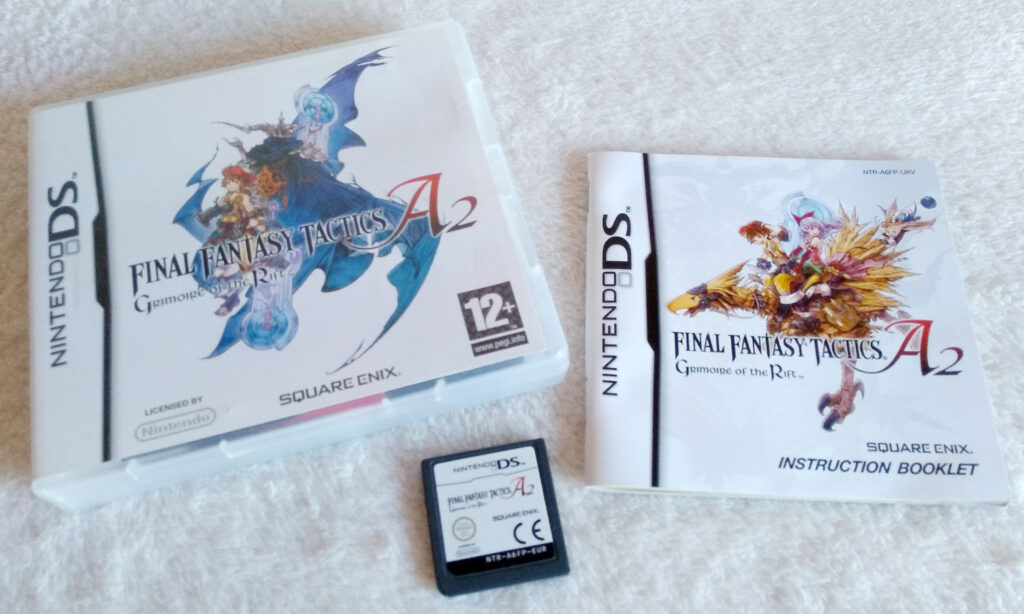
Platform: Nintendo DS
Release Date:
JPN: October 25, 2007
NA: June 24, 2008
PAL: June 27, 2008
Publisher: Square Enix
Developer: Square Enix
Genre: Strategy RPG
Saves: 2 separate save slots
Final Fantasy is a great series, but the spinoff Final Fantasy Tactics is just as good. Final Fantasy Tactics Advance was the first one I played and loved, so I couldn’t wait to play its sequel Final Fantasy Tactics A2 – Grimoire of the Rift.
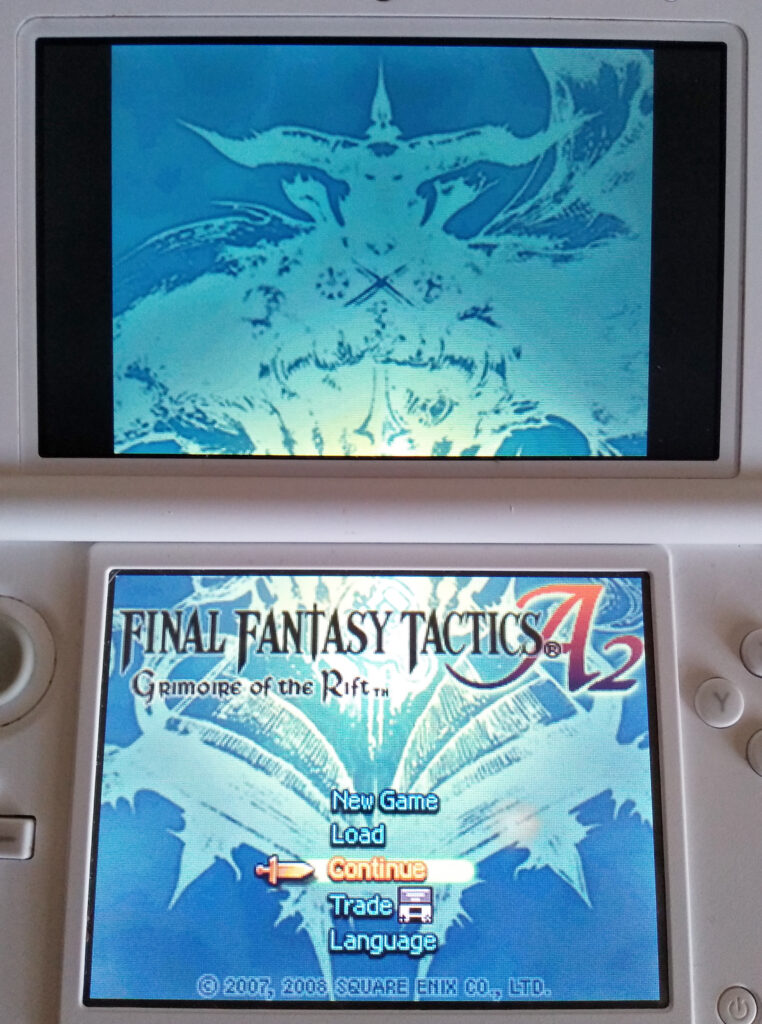
Gameplay
Final Fantasy Tactics A2 – Grimoire of the Rift is, as its name suggests, a tactical game with role playing elements. You play as Luso, a young student, who gets magically transported to the world of Ivalice through a magical book, the titular Grimoire. You quickly form a clan and become involved in battles between rival clans. It is through these Quests you advance the story, explore the world, try to figure out what happened to you and how you can return home.
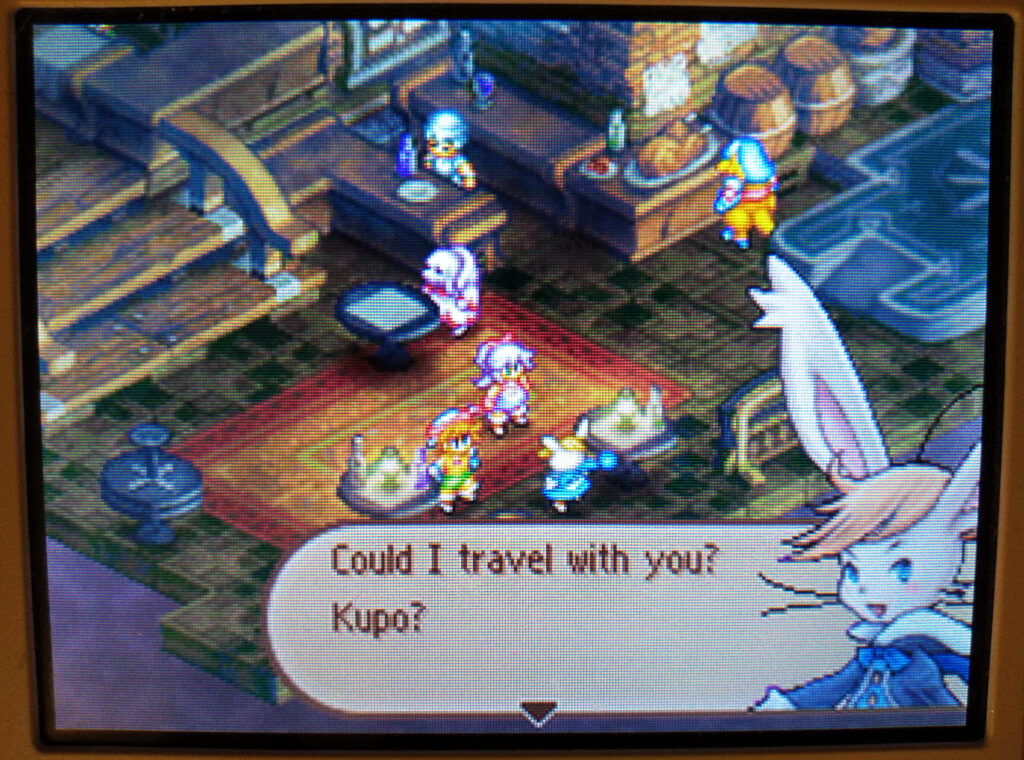
These Quests can be picked up in the Pub, which is situated in Towns. The gameplay mostly takes place on a grid battle field between two small parties. Characters take turns one at a time, whereby their speed determines their order and frequency. Per turn they can move and perform an action, in either order. Battles usually end by defeating the other party, although depending on the Quest other goals could be there, like only having to defeat the leader, or examining special marked spots on the grid to search for a specific item, or simply delivering an item. Prior and after each battle is a short “cutscene”, where the characters advance the story. Apart from moving in battle, the player does not directly move their characters, but only generally places them in locations and the game plays out the situations.
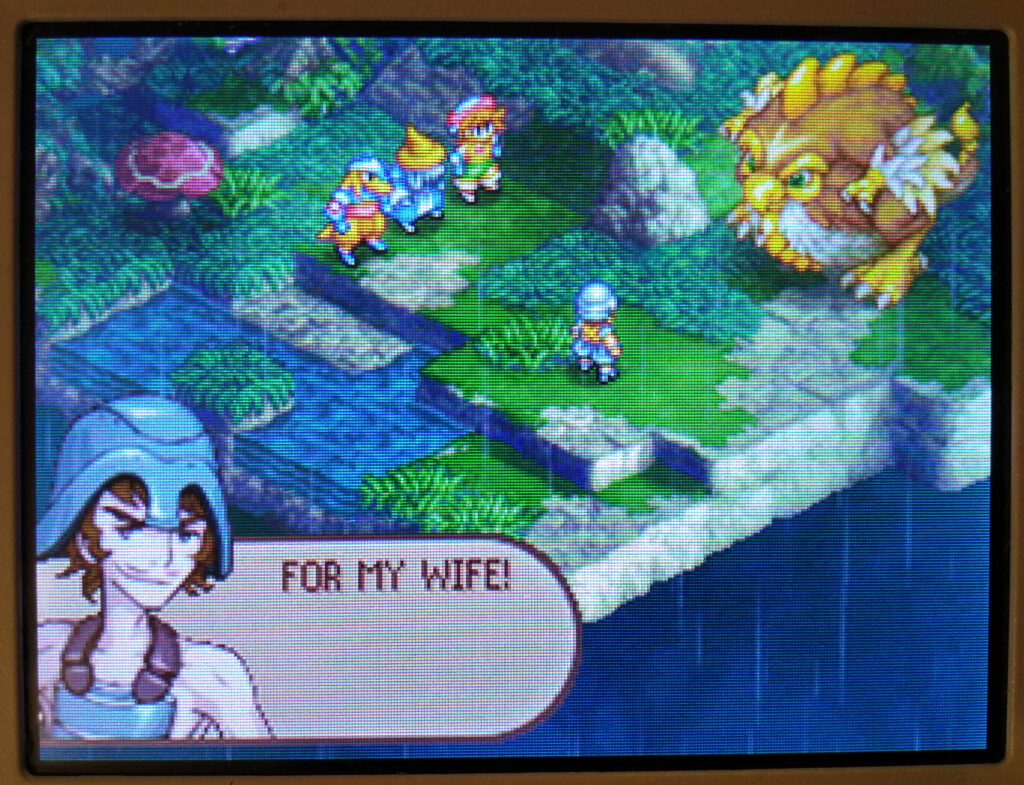
who killed Bowen’s wife Swordmaiden Friese (bottom DS screen)
Most of these Quests are side quests, and are not necessary to complete the main game. However, these side quests do have some interesting side stories to explore, and can unlock new clan members and Jobs.
The game has a Job and Ability system, where each Race (Hume, Viera, Moogle, Nu Mou, Bangaa, Seeq and Gria) has access to certain base Jobs, and Abilities are earned by equipping certain Items and earning Job Points. Even Characters that aren’t in battle will earn JP. Certain Jobs only become available if that Character has learned enough Abilities in earlier Jobs, and/or completing certain Quests from the Pub.
There is also a Law system, whereby Clans upholding the Law get certain perks. If you break the Law you lose these bonuses, and you can no longer revive a party member in that battle. Fallen party members do not die though, and there is no perma-death in this game, unlike its predecessor Final Fantasy Tactics Advance. Sometimes the Judge gets removed from the game, and the game plays as if the Law was broken, so no bonuses and revivals.
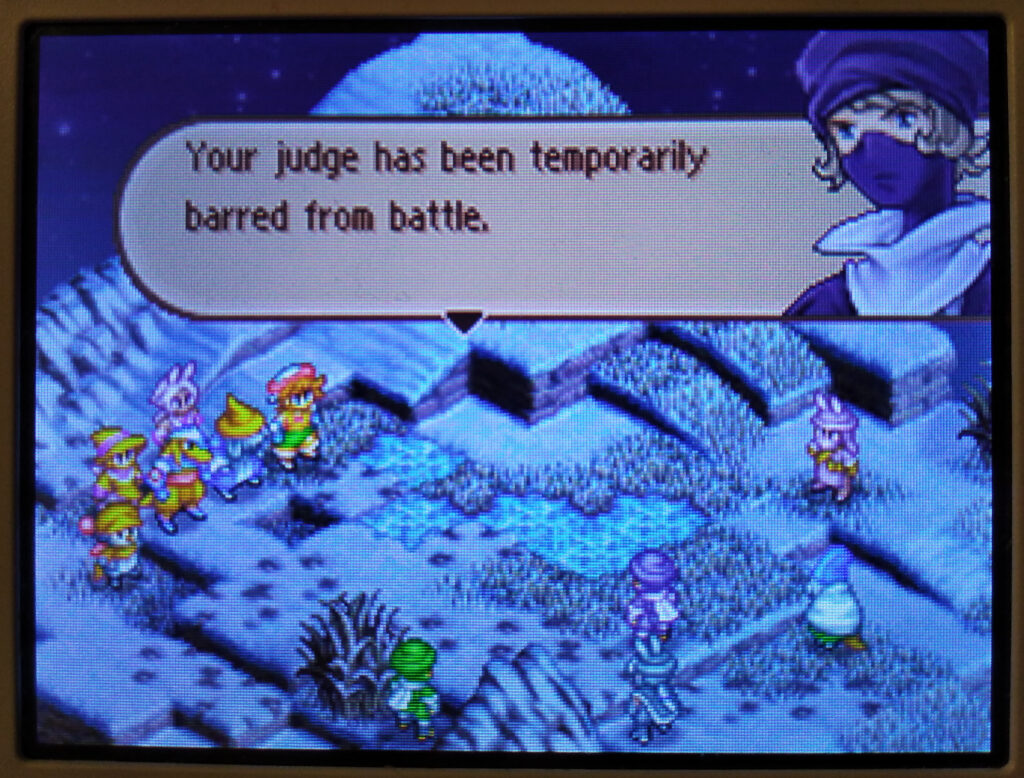
Lastly the game has a Calendar System. A year consists of 12 months, with each month having 20 days, making a total of 240 days in a year. There are 4 seasons, each consisting of 3 months. There’s also different weathers. Certain Quests only appear during certain times. There are 2 locations in game (1 on each island) where you can “sleep” and have time pass, to quickly jump to a certain season or month.
The combination of clans, races, jobs and abilities, with added law bonuses makes for a very diverse and customisable game with a lot of replayability value, as no playthrough will be the same.
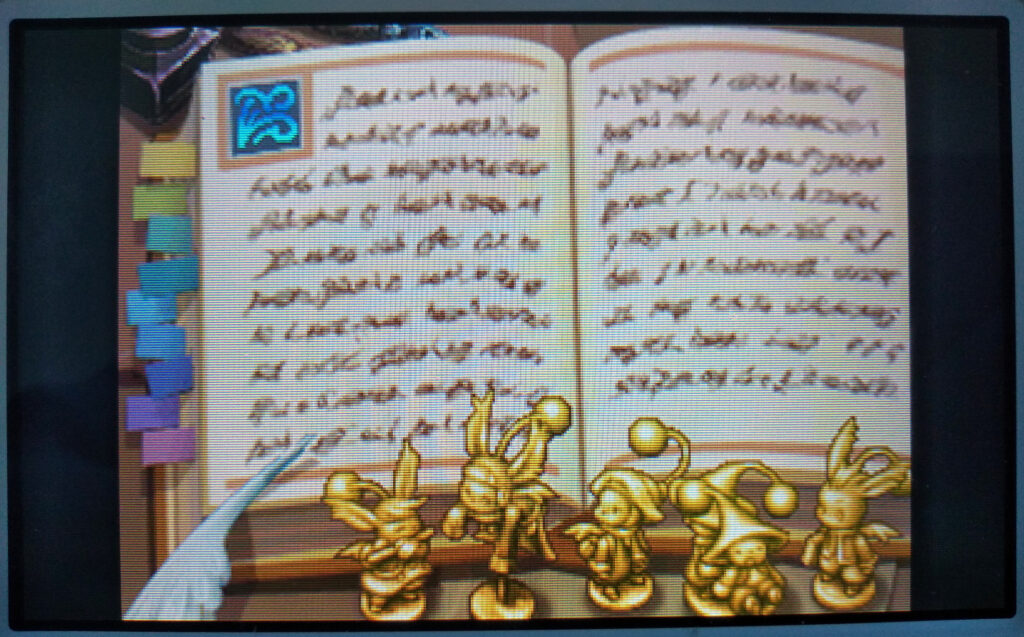
Most of the action takes place on the bottom screen, with the top screen mostly being used to check on your progress. It shows predominately the Grimoire. Each time the Player advances the Story, a line gets added to the Grimoire. Every 5 Quests completed adds a tab on the left side of the Grimoire. After 50 completed Quests a golden Moogle figure gets placed in front of the book. There are a total of 300 Quests in the game, with an added Final Quest if having completed them all.
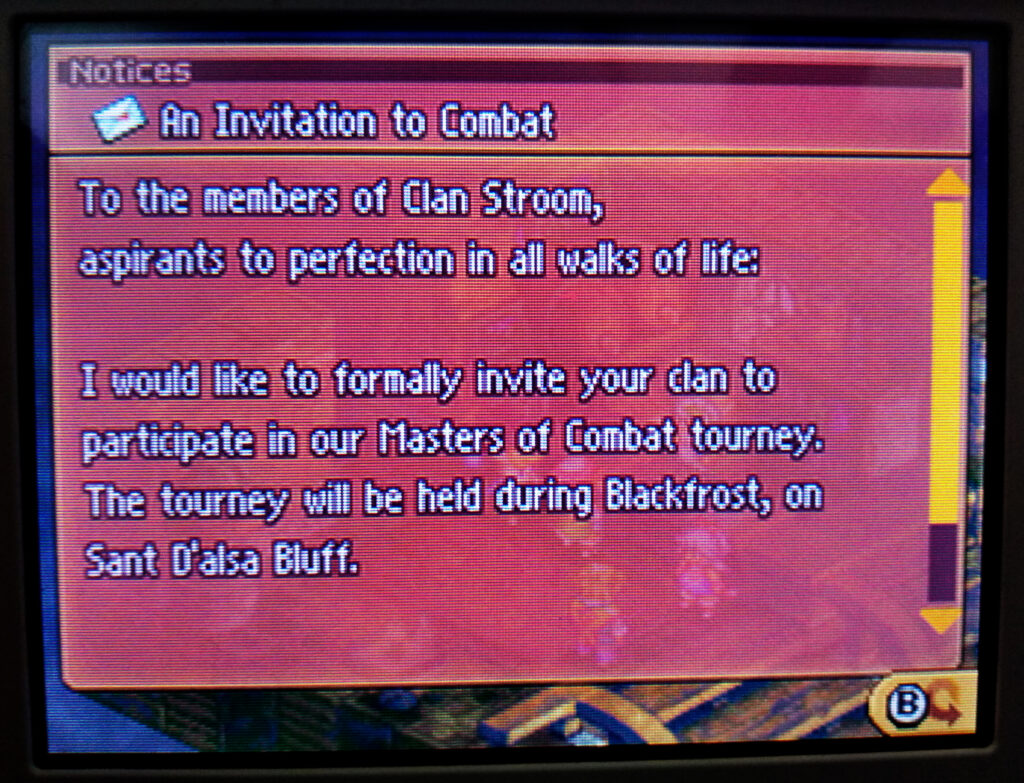
Despite being a sequel to Final Fantasy Tactics Advance, there are very few direct story links and the game can be played without knowing / having played the first, like most Final Fantasy games.
Development
Director Yuichi Murasawa, artist Ryoma Ito, and composer Hitoshi Sakimoto from Final Fantasy Tactics Advance returned to work on the sequel. Akitoshi Kawazu was the executive producer, a role he has had on other Ivalice Alliance projects. Kyoko Kitahara was the writer. The logo design was created by Akihiko Yoshida.
The game was originally planned for the Game Boy Advance, like its predecessor, to cut down on development time and they started producing a version for this system shortly after Final Fantasy Tactics Advance had been released in 2003 with great success. The team also wanted to add new features, as the short development time of the original Final Fantasy Tactics Advance prevented their inclusion.
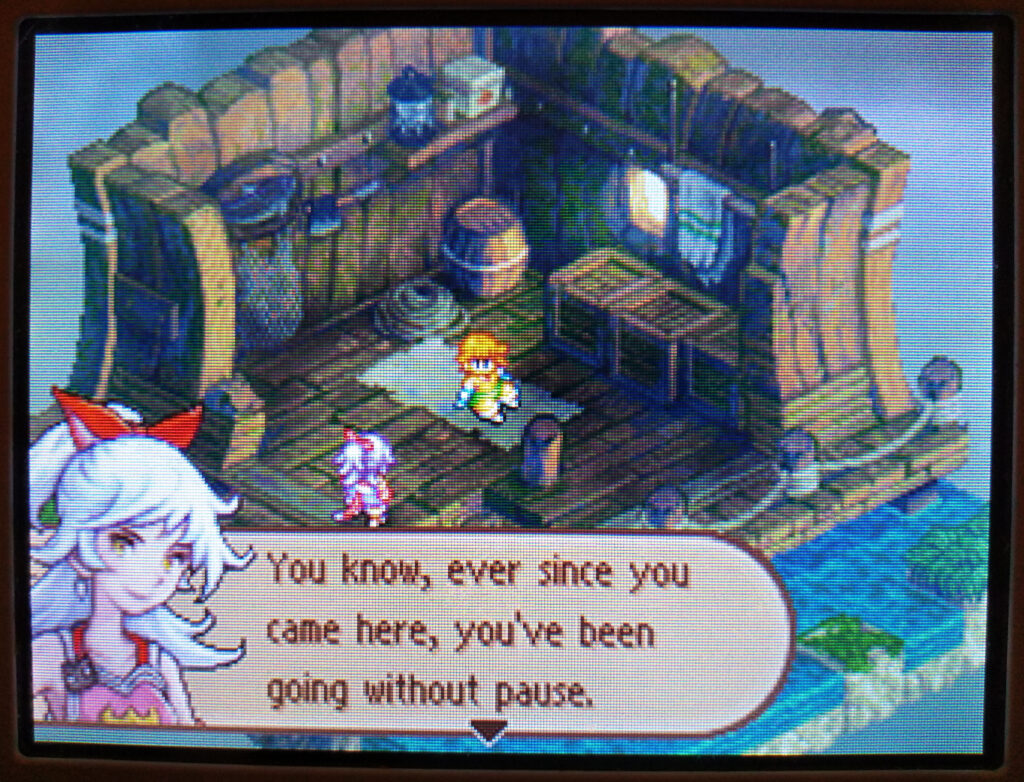
After the successful launch of the Nintendo DS Square Enix changed the project from GBA to DS. Production for this version started in 2006, with active development being delayed due to Murasawa‘s commitment to other projects.
There are some interesting things behind the decision to make the title “A2.” I had some trepidation from the time we started thinking of making the game for the Nintendo DS. Since it’s not an [Nintendo’s Game Boy] Advance game I had doubts about “A2.” But fine, I thought, we’d leave the “A” part, and think about what to do about it later. And of course that’s how it stayed even as the game finally became a DS title. [Laughs] So the meaning of the “A” isn’t very clear. If we ever make another title the decision about whether to call it “T-A3” will be even worse. [Laughs]
– Akitoshi Kawazu
Like its predecessor, the game was designed to be accessible to casual gamers while maintaining serious narrative themes. Keeping the large casual gamer base of the Nintendo DS in mind, the team designed the game accordingly and describe the story as “light adventure” similar to Final Fantasy Tactics Advance.

The original story was much darker, with Luso living in Ivalice and being the sole survivor after an attack on his village. They instead went for a lighter approach, and the sense of fun intended by the developers was thematically represented by the opening being set during the beginning of summer break.
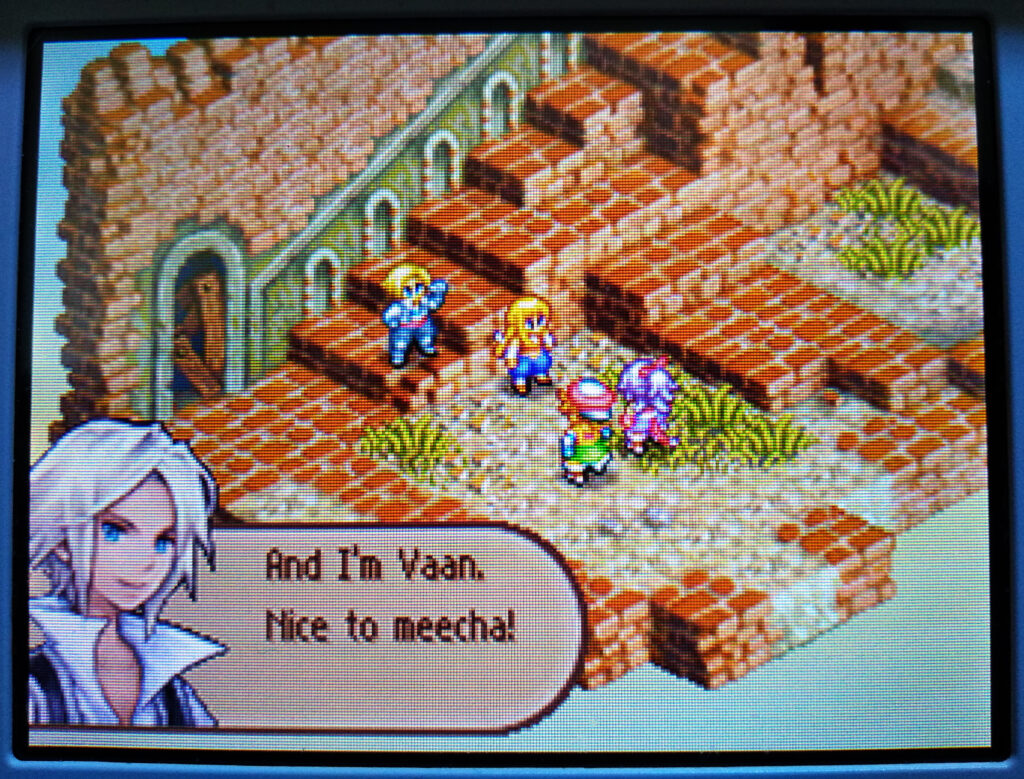
From an early stage on the characters from Final Fantasy XII were planned in. Wanting characters who could appeal to long-term fans and series newcomers, the team incorporated Vaan and Penelo, with Vaan’s attitude reflecting his character development across Final Fantasy XII and its sequel Revenant Wings.

Balthier was requested to be in the game as well, but refused by the writer. Al-Cid originally had a minor role, but eventually got approved to be a recruitable Character.
The biggest change between developing Final Fantasy Tactics Advance and its sequel was the dual screens of the Nintendo DS. This enabled menu displays to be spread out. It also increased the visual spectacle of the Summons. These monsters were taking directly from Final Fantasy XII, making for a total of 13 rather than 5 as in the previous game. To convey their scale, they used both screens for their attacks. Initially planned to be purely cinematic attacks, the effects team successfully created a version which used real-time graphics and still conveyed the summons’ scale and power.
Murasawa regretted the lack of variety in the original game, so the quests variety got expanded. The team’s aim was to make a “character-building game with a twist”, promoting variety and depth with character customization. When creating the gameplay, multiple mechanics from Final Fantasy Tactics Advance were carried over, while also adjusting elements such as the levelling system and Law mechanics.
Lastly the team also included a large number of tutorials to cater to the casual audience. Perma-death also got removed.
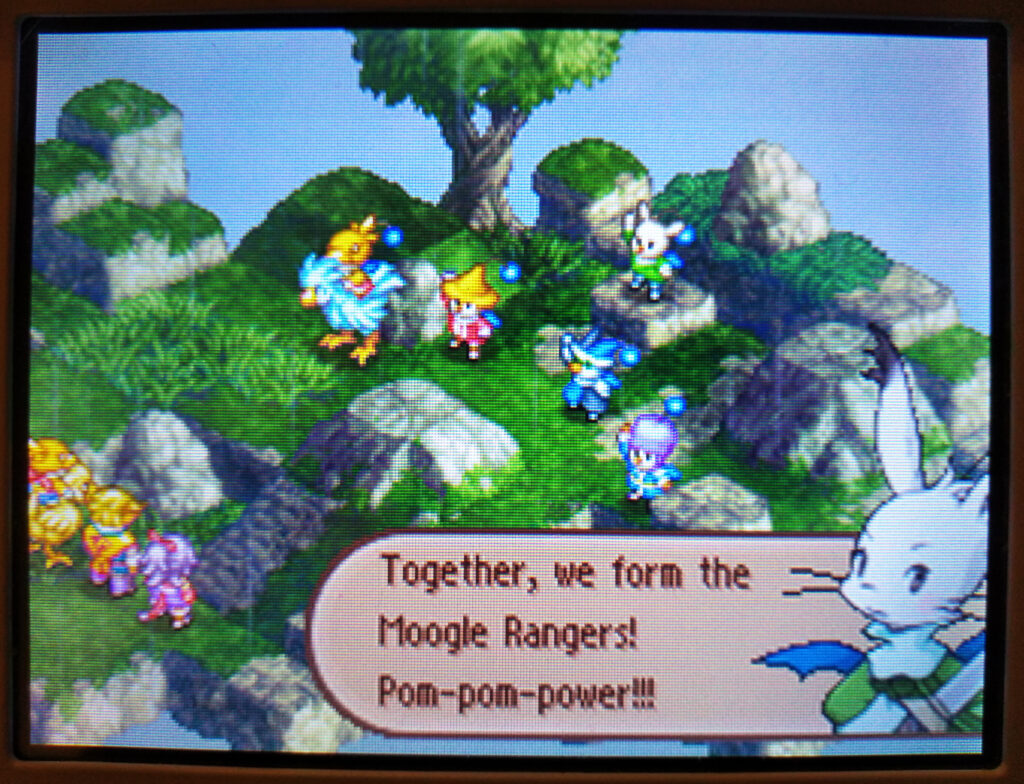
For more information, I found some nice old interviews with the staff here:
– Interview with Character Designer Ryoma Ito – Part 1, 2
– Interview with the Direction Team – Part 1, 2, 3
Localisation
The team decided not to use the touchscreen of the Nintendo DS as it did not fit in with their design plans, so the Japanese release has no touchscreen support. The Western release however, added touchscreen-based stylus control.
The English translation was done by Alexander O. Smith and Joseph Reeder, who had also worked on Final Fantasy XII and Vagrant Story.
Packaging
We only got the European version of Final Fantasy Tactics A2. To be more specific, the UKV version (United Kingdom). It’s from my boyfriend, who is from the UK so makes sense.
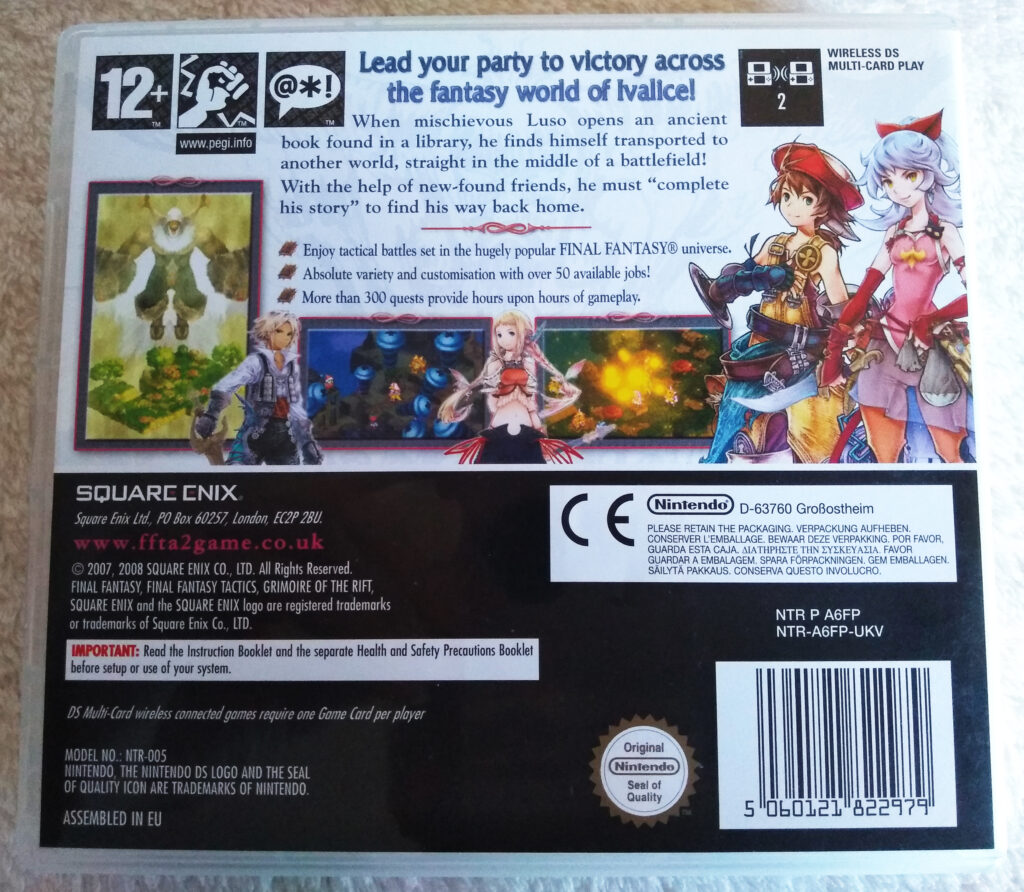
The box and manual all have the code NTR-A6FP-UKV. The box’s spine as well as the manual’s corner is green. The game has the code NTR-A6FP-EUR. So this is the box and manual distributed in the UK, and the game itself is distributed in Europe (EUR).
The box has minimal text, with Character Art and 3 screenshots. 1 of these screenshots is a dual screen Summon, whereas the other 2 shows of screen filling attacks. Clearly showing off the effect team’s hard work!
The box reads: “When mischievous Luso opens an ancient book found in a library, he finds himself transported to another world, straight in the middle of a battlefield! With the help of new-found friends, he must “complete his story” to find his way back home.” It further highlights the Final Fantasy universe, 50+ Jobs and 300+ Quests.
The manual is quite thick with a lot of explanations. This makes sense as the game has a wide variety of options and mechanics that work together. It also has gorgeous Character Art inside, introducing the Main Characters, Races and Jobs. At the end of the booklet are some advertisements for other Square Enix Games.
It also comes with an European Health & Safety Precautions Booklet and a UK Square Enix questionnaire.
Accessibility
- Visual
The game requires you to see the characters on the grid and place these strategically. There are a lot of text based menus, which change depending on context. I am unaware of screen readers for the Nintendo DS, but perhaps this would be a possibility?
Text itself is quite small, and a pixel font. That said I had no difficulty in reading it due to the high contrast and clear letters, often stroked to stand out.
Although each Race / Job / Item has unique sprites, the different coloured Chocobo sprites are only differentiated by colour. They have however labels, so highlighting them should say which colour they are.
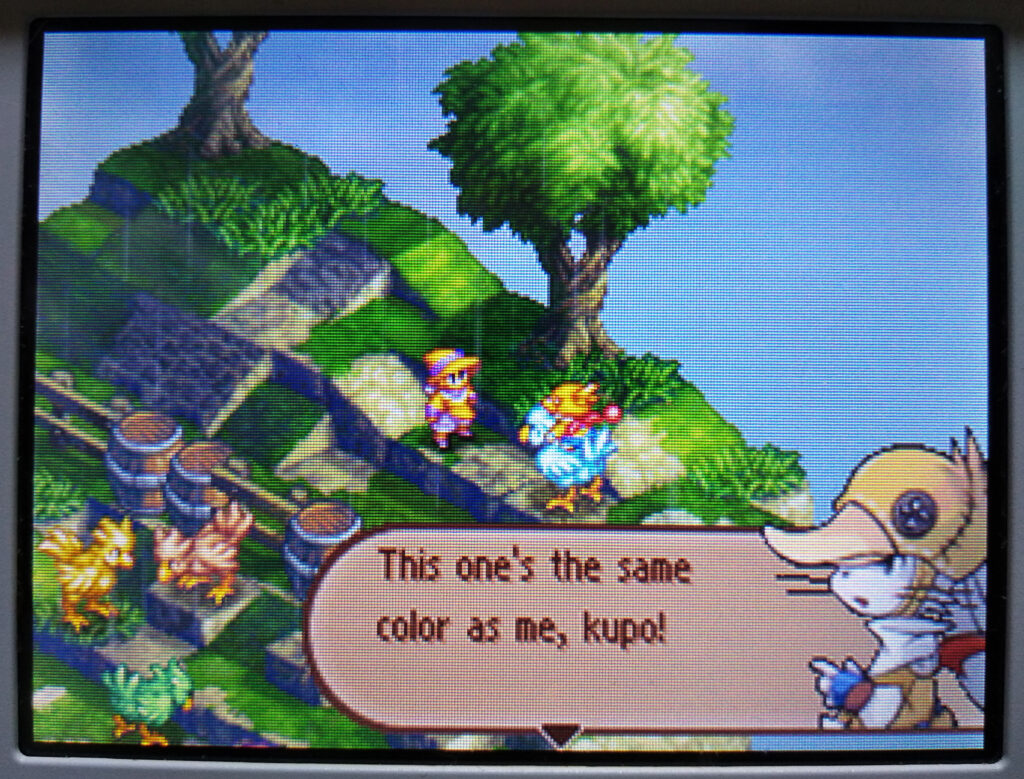
- Fine-Motor
The game is turn-based and makes use of menus. Player can take their time setting up and no fast or precision movements are required. Both D-Pad and Joystick can be used, as well as the Touch-Screen Stylus if you have a Western copy. Furthermore I found the game quite easy (having played on Normal difficulty setting) and there’s no hard punishment for losing a Quest (no perma-death and you only lose the gill you spend on gaining the Quest). - Auditory
The game does not require audio to be enjoyed, although it has an incredible soundtrack of 60+ songs using sound streaming, making it close to CD quality.
If you rely on audio cues this game might be doable, as selecting and moving, as well bringing up menus makes an SFX noise. - Cognitive
It can be tricky to remember what each move does, what weapon you need for what ability, when you unlock a job etc. but you can toggle on a help menu that explains things by pressing [Y].
Power Up
I enjoy the early pixel Final Fantasy games. The art is always gorgeous and the story is nice. I had played Final Fantasy Tactics Advance previously, and quite enjoyed the spin-off. Perhaps even more so than the originals. I enjoy some turn-based strategy games, and FFTA might be one of my favourites. So when my boyfriend had Final Fantasy Tactics A2 I of course had to play that too.
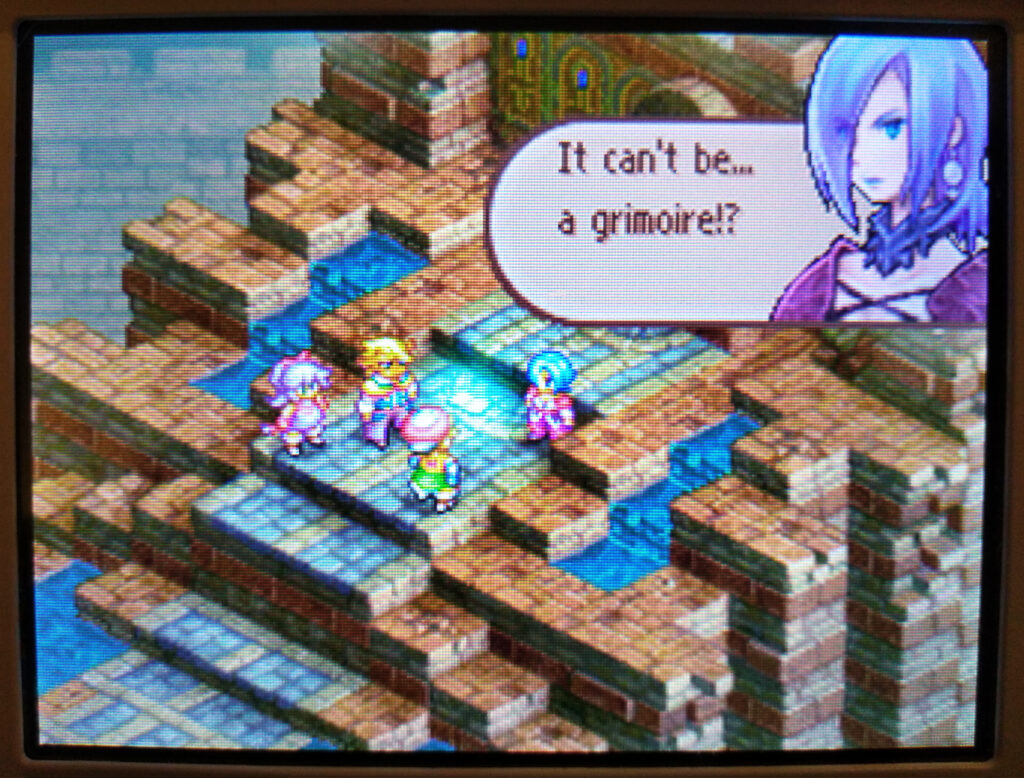
Due to the portable and turn-based nature, it was quite pleasant to play during my work lunch time. A good 20min play would get me through most Quests. You can save anytime, in pub or battle. You can tell the game was designed for more casual play.
As a completionist, I had to of course play all the Quests. The main story is actually not that interesting in my opinion, it’s the chained side quests where the interesting stories lie. You get attached to the recurring characters and their stories are far more compelling than what is happening with Luso. No spoilers, but the one with the Zombie in particular is great.
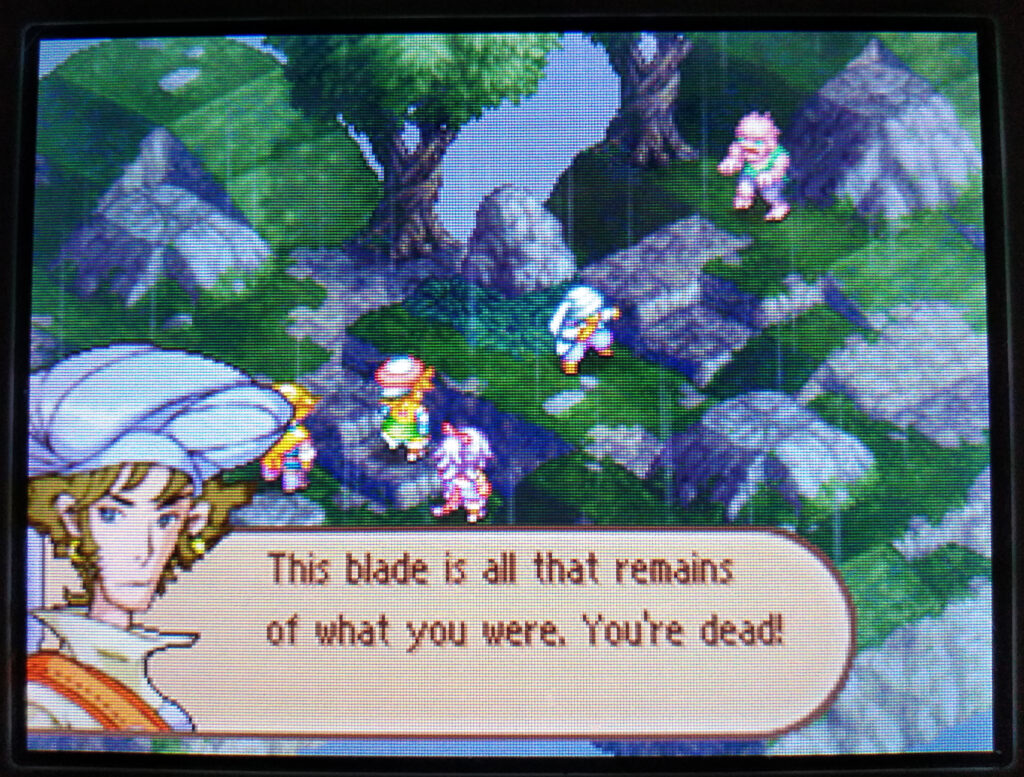
Some Quests are quite convoluted though.
Certain Quests only appear in certain locations during certain times. These can be easily missed.
There’s a Quest that sends you to 1 of 4 different locations, so to unlock all locations you have to play it at least 4 times. There’s another about two clans, the Nu Mou Nobles and the Bangaa Brotherhood, who have been fighting over and over for the Rupie Mountains. To unlock their final quests, you have to replay these Quests / battles over and over. I don’t know whether to find that clever or annoying! I don’t like replaying things, but overal though, I enjoy where the story happens through your game actions, which is certainly the case here.
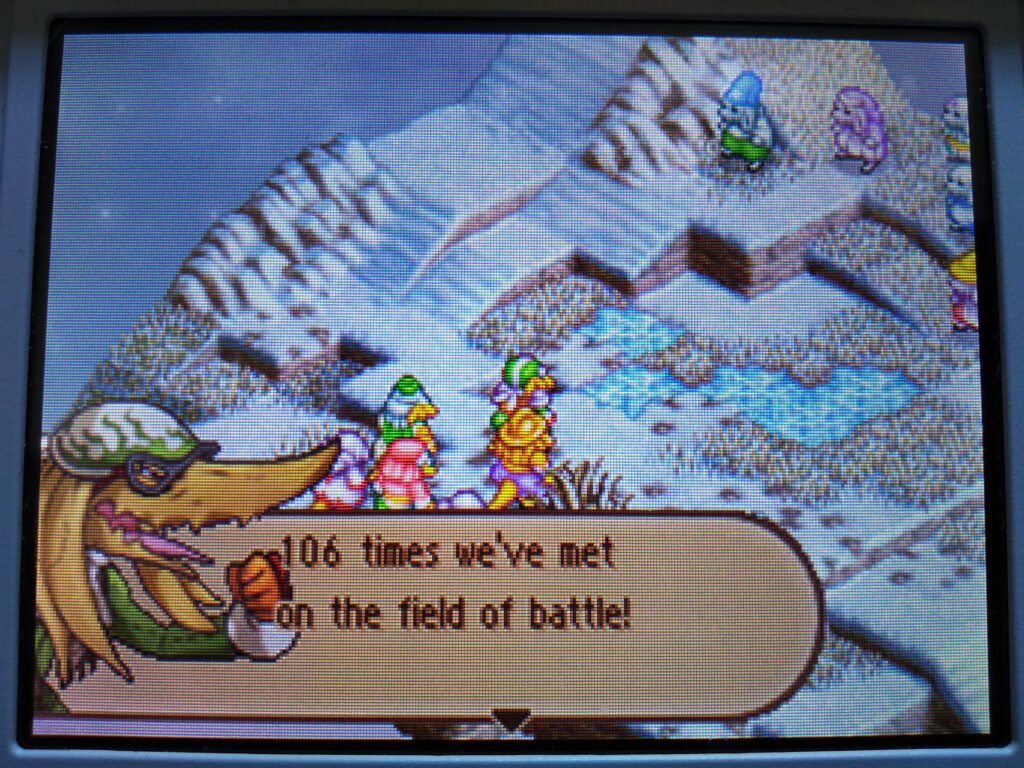
Some Quests are more annoying in the fact they take forever, yet have to be completed in a certain time frame, like finding specific coloured Chocobo, which is very RNG based. So you end up having to try them a couple of times.
If you want to complete them all, a guide will be needed (I had to use one too!).
Apart from that the game isn’t very hard. You quickly win the clan territory and have your points maxed out. Characters gain JP even if they are not in battle, so your entire clan levels up easily. There’s no perma-death, and if you lose a Quest you lose the gil spend on accepting it, nothing more.
That said there are some harder bits in the game, ramping up the difficulty curve suddenly. The Cinquleur Clan spring to mind. A powerful clan with 5 strong Mages of each colour, like the name suggests, who you all have to defeat individually, and finally all combined. They even return in the Final Quest. Optimal strategy is needed here.

Then there are the bonus Towers, where you have to get to the top of a Tower and defeat all enemies. Once defeated, you unlock another Tower, for a total of 3 Towers. Each Tower has a unique Item in its layers, which can only be gotten by following specific steps in the tower.
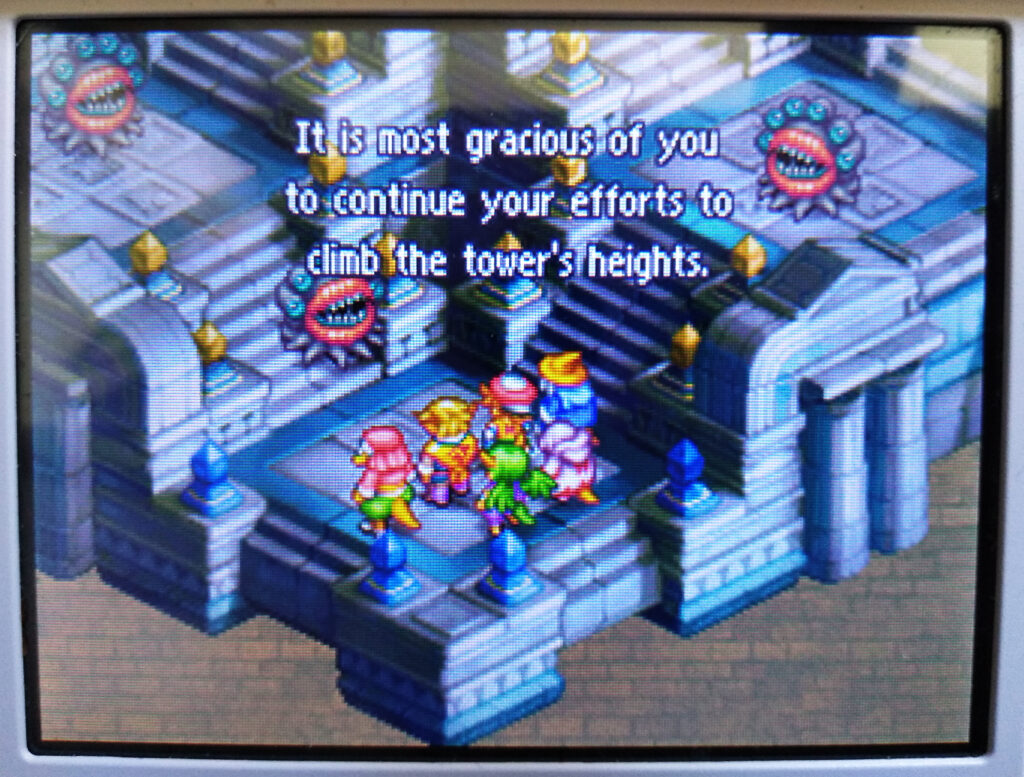
Although the first time they may take you off guard, it was the top level only I really struggled with, as the enemy’s are such high levels.
And finally, there’s the Final Quest, only available after finishing all 300 Quests. It’s another Tournament, but with the strongest Clans, all level 99. Once you win, the game immediately goes to Credits. You can’t save your victory, and it’s only for bragging rights.

Apart from the varied quests with great stories, and the harder quests which made me think and strategise more, I absolutely love the art style!

I love pixel games in general, but there is something about Final Fantasy Tactics small grid and people that’s just adorable. The little characters in diorama style areas are just cute! And despite this limitation the animations are surprisingly diverse and a lot can play out on these tiles. The effects are also quite impressive, especially when the dual screens get utilised.
Final Fantasy Tactics may be one of my favourite turn-based strategy games series. And Final Fantasy Tactics A2: Grimoire of the Rift is equally great, if slightly more casual. There’s still plenty to do for hardcore fans. I myself spend 120! hours playing it, and I thoroughly enjoyed it.

Recommendation
This game still holds up today. The graphics are cute and look nice on the DS screen and the soundtrack is gorgeous and of great quality. There’s tons of variety in the game, from customising your characters / clan to all the quests.
Catering to casual players, it’s quite easy to pick up and finish, despite all the systems in play. For the more hard core players there’s tons of strategies and extra quests to explore.

If it’s your first Final Fantasy Tactics game, you won’t be disappointed. If you have played the previous ones, you might find this one almost relaxing but still quite fun.
If you like turn-based strategy games, an anime pixel style and love to strategise, I recommend this game. If you like the Final Fantasy Tactics series, or Final Fantasy in general, you will love this too.
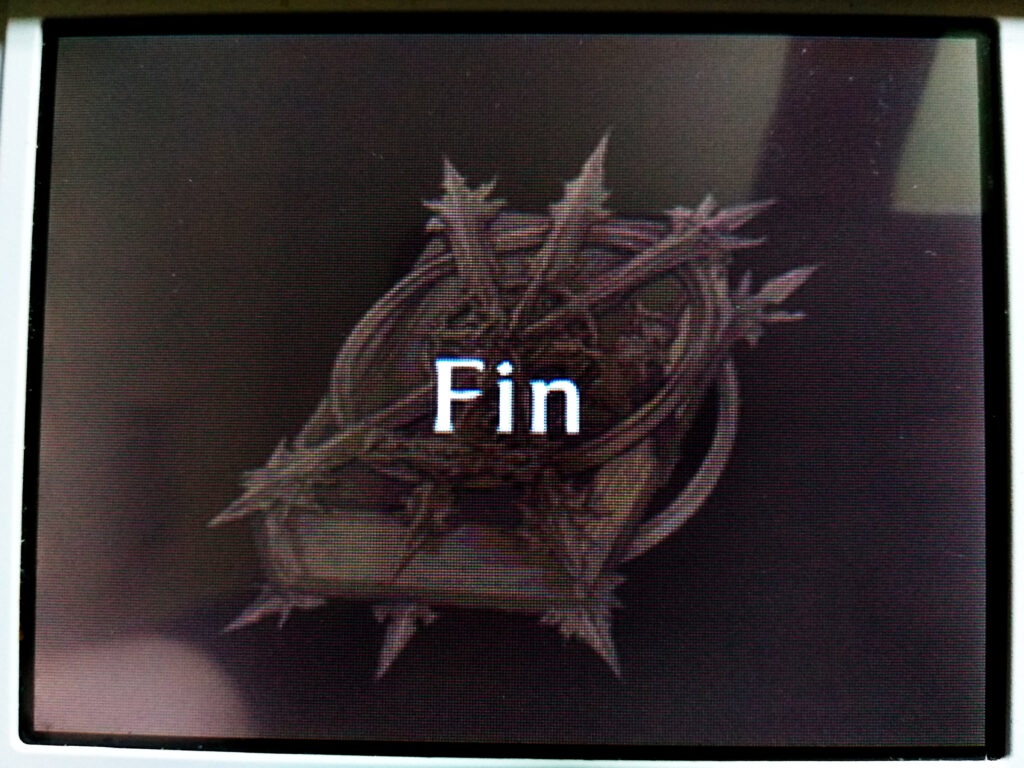
Did you play this game? What are your memories of it? Are you thinking of playing this? Is there any information you’re missing? Let me know in the comments below!